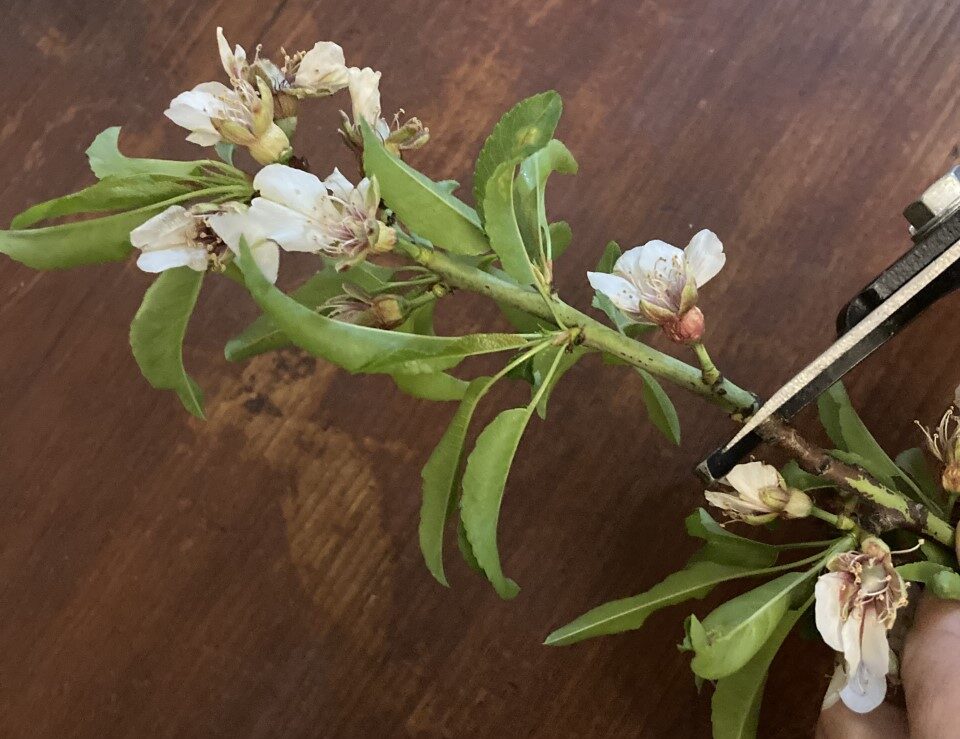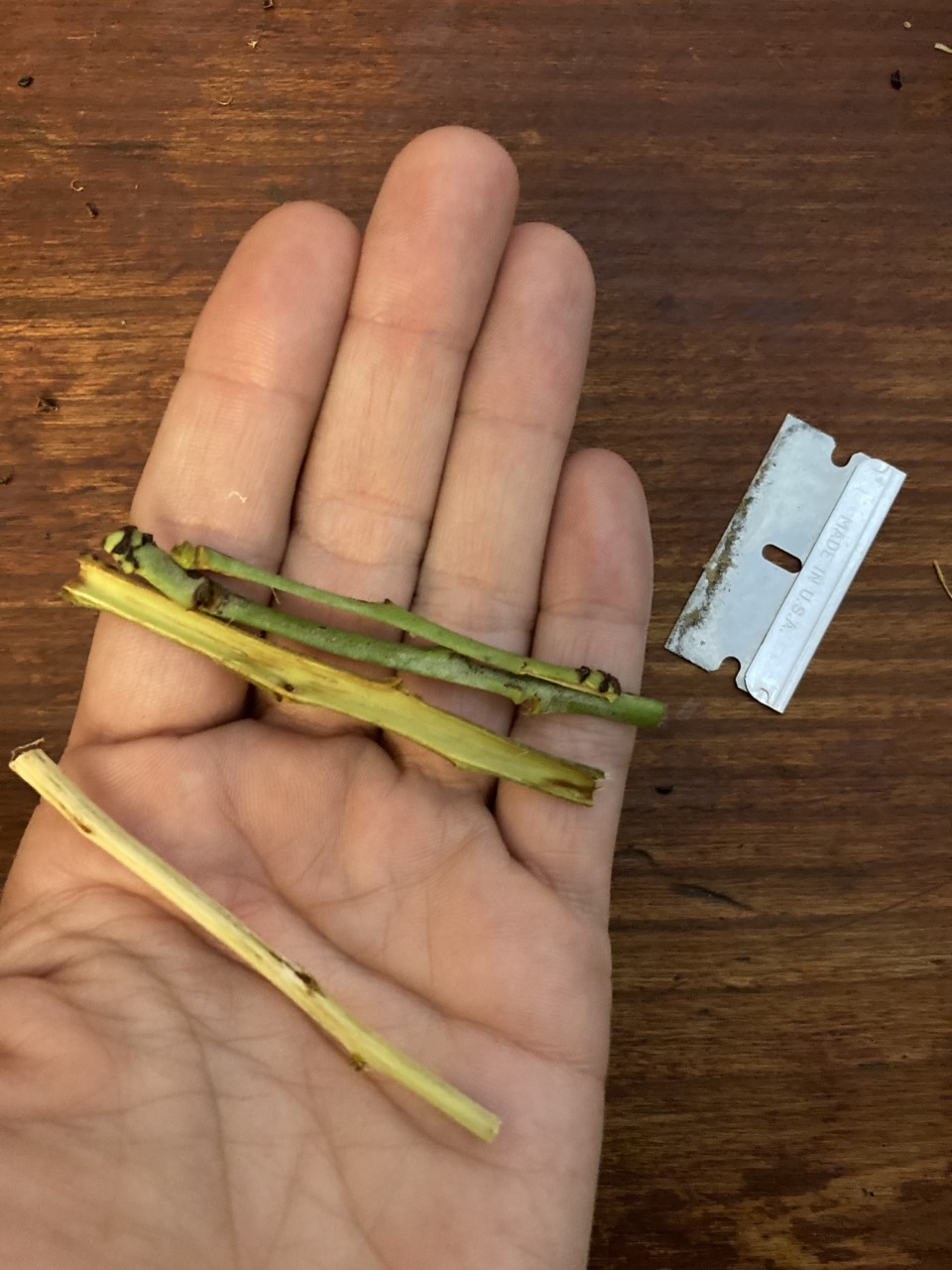
The citizen science approach at UC Davis’ Carbohydrate Observatory is yielding valuable information for tree nut growers.
Founded by UC Davis plant physiologist Maciej Zwieniecki, the Carbohydrate Observatory, part of the ‘Z Lab’, has received samples from about 600 almond, walnut and pistachio orchards across the state. The samples, sent throughout the year, are being used to track seasonal trends of non-structural carbohydrate levels over multiple years and gain deeper knowledge of the biological processes within trees. Funding for this research has come from Almond Board of California, California Pistachio Research Board and California Walnut Board.
One of the most important discoveries made thus far is a strong correlation between tree carbohydrate levels and crop yield. Paula Guzmán Delgado, director of the Carbohydrate Observatory, said the information gathered from the samples would also help with development of specific management guidelines for growers, helping them improve production and predict yields.
The purpose of the carbohydrate research is to build a stronger biological understanding of the role carbohydrates play in tree nut production and to use data generated by the twig samples as a yield and bloom prediction tool. Coupled with the effect environmental stresses have on tree health and yield, researchers hope to arm growers with knowledge to improve production.
Presently, results from sample testing are available through a website that participating growers and the public can access. Growers are able to track the carbohydrate levels of their nut trees throughout the year and pair the levels with climate, management or phenological events such as dormancy, pollination, bud break, flowering, fruiting, harvest and leaf drop.
How Carbohydrates Work
During photosynthesis, carbohydrates are formed as plants convert CO2 from the atmosphere. A UC Davis report on carbohydrate dynamics in almond trees explains that cellulose, a structural carbohydrate, builds cell walls. Non-structural carbohydrates, or NCSs, support trees as sugars or starches. Sugars are the product of photosynthesis and starch is the storage form of carbohydrates and can be broken down later to provide sugars. NCSs circulate through trees throughout the year, but levels fluctuate with the stage of production. For example, NCSs are depleted during bloom, then build up to assist with new growth and nut fill, then decline until postharvest. Carbohydrate levels in the tree peak in the fall, and the supply is there for the next bloom. Fluctuations of NSC content occur throughout the season and significantly varies between years due to inherent climatic effects on trees’ energy reserves.
UCCE Orchard Systems Farm Advisor Katherine Jarvis-Shean, explained in Sac Valley Orchard News that the carbohydrate level research also helps explain how trees may be counting winter chill and spring heat. By following the amounts of NSC in a plant over time, a better understanding can be reached of how trees are using carbohydrates for vegetative and fruit growth or future challenges including dormancy, defense against pathogens and other stressors.

Bloom Prediction
The Carbohydrate Observatory team used 40 years of bloom data to develop a model which uses fall NSC and winter hourly temperatures as inputs. The model provides a physiological framework for bloom forecasts in almond, integrating contrasting notions of chill and heat, and explains why abnormal winter temperatures may compromise bloom.
The observatory team quantified NSC throughout the winter in almond, peach and pistachio trees in California and Israel and characterized winter metabolism. The model constructed projects changes in starch and sugar soluble carbohydrate concentrations by temperature-mediated kinetics. The model was tested against 20 years of temperature and phenology records from California.
The model projects a surge in starch synthesis at the end of winter and critically low concentrations of soluble carbohydrates that trigger bloom.
Jarvis-Shean wrote that the Carbohydrate Observatory found that in almonds, walnuts and pistachios, shortly before bud break, there is a surge in starch and lower sugar concentration. She explained that plants regulate sugar concentrations to maintain desirable metabolism and osmotic dynamics within their tissue. The lab used this information along with specific values and thresholds assembled from sampling to create their model for almond bloom timing.
The negative correlation between twig NSC content in the late summer and early fall and yield the following summer implies need for development of postharvest management practices that will assist with improving NSC content prior to natural defoliation.
Fall orchard practices that interrupt NSC accumulation, environmental impacts on NSC accumulation, or disruption of phloem activity during dormancy can lead to significant delay in bud break. Early leaf drop in the fall can delay bud break in the spring.
In a research update provided by Almond Board of California, Zwieniecki noted that high seasonal variation of NSC and starch reserves determined that mid-summer was an important period for reversal in the NSC trend from supply to accumulation of storage. This suggests, he said, that management practices during and postharvest might influence the future performance of an orchard.
Other Conclusions in Pistachio
Alternate bearing can be linked to the accumulation-exhaustion pattern of NSC. This suggests that management practices that reduce the exhaustion of NSC or rapidly restore reserves can lead to a reduction in alternate bearing.
Natural senescence and spring thermal conditions promote NSC redistribution across the tree crown and result in synchronous early bloom. All conditions that reduce fall NSC content or affect spring redistribution of carbohydrates result in bloom delay and asynchronous bud break.















